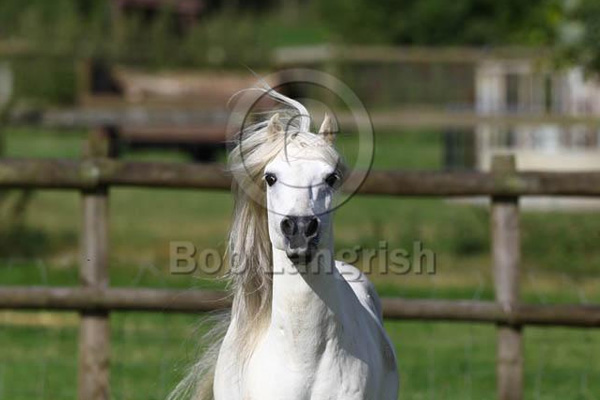The results of the measurements on the right and left eyes of the Caspian horses No significant difference was found between the measurements taken from the left and right eyes of the Caspian horse.
Article in Iranian Journal of Veterinary Research , January 2009
Authors
S. Soroori1; M. Masoudifard 2; A. Raoofi1; M. Aghazadeh3
1Department of Clinical Sciences, Faculty of Veterinary Medicine, University of Tehran, Tehran, Iran
2Department of Clinical Sciences, Faculty of Veterinary Medicine, University of Tehran, Tehran, Iran
3Graduated from Faculty of Veterinary Medicine, University of Tehran, Tehran, Iran
Abstract
Ultrasonography is a relatively easy, safe and non-invasive examination method which can be used in diagnosis of ocular disorders as complementary to routine ophthalmic examinations.
As there has been no collated study undertaken on the normal measurements of ocular structures in Caspian miniature horse, obtaining these measurements could be a benchmark to diagnose some of the diseases and eye problems of this miniature breed.
Transpalpebral ultrasonographic scanning of left and right eyes of six Caspian horses was performed using a 10-13 MHz transducer. Qualitative ultrasonographic findings of the eyes were described and measurements of the ocular structures were obtained. Mean ± standard deviation of the anterior-posterior length of the eye axis, thickness of the lens, depth of the anterior chamber and depth of vitreous were as 32.9 ± 1.0, 10.8 ± 0.8, 3.0 ± 0.5 and 18.3 ± 1.0 mm, respectively.
Results
In B-mode ultrasonography, four major echoes i.e. cornea, anterior lens capsule, posterior lens capsule and retina-choroidsclera complex were easily seen.
The cornea was represented as a curved hyperechoic interface immediately under the eyelid. In some of the sonograms, the cornea could be seen as three thin layers, in which the anterior and posterior layers were quite hyperechoic and the middle layer appeared anechoic (Fig. 1).
Anterior chamber of the eye, lens cortex and nucleus and the vitreous were anechoic just like other horse breeds. In some of the images, the optic nerve appeared as a hypoechoic structure posterior to the optic disc in the retrobulbar region. Other echoic structures including ciliary body, iris, corpora nigra and optic disc could also be distinguished (Fig. 1).
Although the obtained images of the horizontal and vertical planes were similar, acquisition of the interpretable sonograms was more easily done in horizontal planes.
The results of the measurements on the right and left eyes of the Caspian horses are shown in Table 1.
No significant difference (P>0.05) was found between the measurements taken from the left and right eyes of the Caspian horse.

